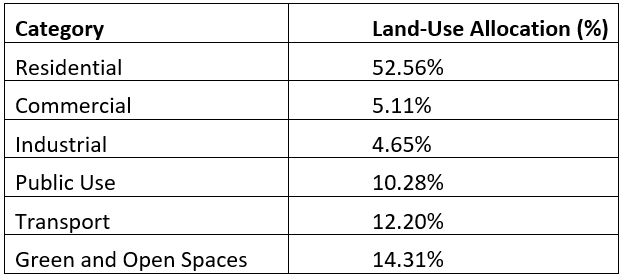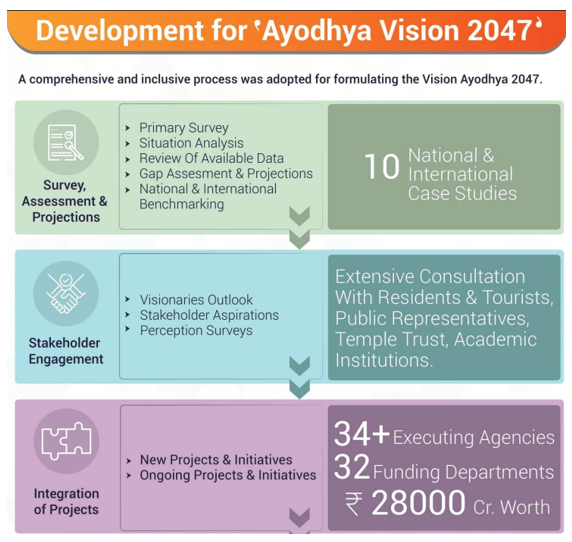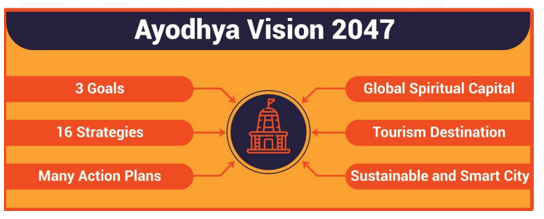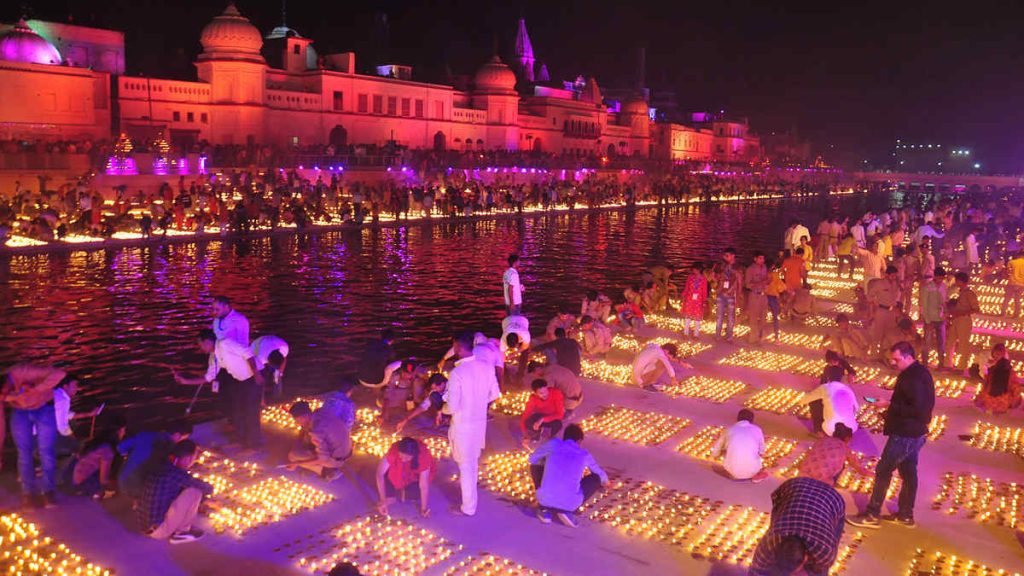Context:
Uttar Pradesh Chief Minister, during a review of the Ayodhya Master Plan 2031, emphasized that the city’s development must strike a perfect balance between grandeur, spirituality, and modernity.
- Under Ayodhya Vision 2047, the city will be showcased as a global spiritual hub, a city of knowledge and festivals, and a green, solar-powered city equipped with modern urban amenities.
About Ayodhya Master Plan 2031:
- Objective: Ayodhya’s development should stand as a model not only for religious tourism but also for economic, cultural and social advancement while preserving its cultural heritage, religious sanctity, and environmental balance.
- Zoning and Land Use: To ensure balanced land use, the Ayodhya Development Area has been divided into 18 zones.
- Based on a projected population of 23.94 lakh, the land-use allocation includes:

- Infrastructure Plans: Ayodhya’s population, now about 1.1 million, is projected to reach 2.4 million by 2031 and 3.5 million by 2047.
- Accordingly, the Master Plan envisions new townships, a grand entrance gate, multi-level parking, major roads, an airport, a temple museum, a solar plant, hotels, and other modern amenities.
- At least 159 investment projects have been approved in the Ayodhya development area, with projected investments of ₹8,594 crore.


- Strengthening Regional Transport Connectivity: Development of parking facilities, including bus and truck terminals, on routes leading to Lucknow, Prayagraj, Gonda and Ambedkar Nagar.
- Harmonizing Industrial Growth with Religious Projects: Expansion in land allocation for mixed-use, industrial development, and activities along the 14-Kosi Parikrama Marg.
- Environmental sustainability: Emphasis on effective sewage and solid waste management, with a focus on innovation and indigenous models in these areas along with strict safeguards for the Saryu riverbanks and surrounding green zones.
- Ayodhya is being developed as a green and solar energy-based city, which would include a township spanning over 1,000 acres.

